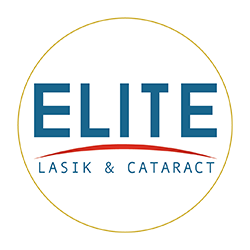Vision Correction Options
Everyone’s eyes are unique. The key to finding the right procedure for you is to find a surgeon who is qualified to evaluate patients for a variety of surgical options. At 20/20 Institute, our independent doctors will use their vast expertise in laser vision correction to help you find the right fit for your eyes.
Wavefront LASIK (Custom LASIK)
This technology is considered by ophthalmologists to be the most advanced form of LASIK available.
Wavefront-Optimized® LASIK treats nearsightedness, farsightedness and astigmatism (low-order aberrations) while at the same time accounts for the unique imperfections or attributes of each person’s visual system (high-order aberrations.) Most experts agree that in general, Wavefront LASIK provides the patient with a better visual result and a better quality of vision than the conventional (standard or traditional) LASIK. Side effects like dryness, glare, halos around lights and other quality of vision symptoms can accompany the healing process. Most of these symptoms resolve over time; however, in some cases these quality of vision issues can be permanent. Night vision is where a patient usually benefits the most from Wavefront LASIK. The FDA recommends this link for more information about LASIK and its risks and complications: Click Here.
PRK (Photo Refractive Keratectomy)
An alternative laser vision correction procedure similar to LASIK, commonly known as PRK.
PRK (like LASIK) can be provided to a patient utilizing conventional or Wavefront laser technology. The difference in PRK is that instead of fashioning a flap, as done during the first step of LASIK, the ophthalmologist accesses the cornea by carefully removing the skin of the cornea (the corneal epithelium). Some doctors prefer PRK for patients with thinner corneas. PRK also eliminates the risk associated with corneal flap creation. PRK has similar visual outcome results and safety profiles as LASIK. Some occupations require a patient to have PRK instead of LASIK, so you should check to be sure you understand your occupational vision correction requirements before choosing any procedure. PRK, however, has a much slower visual recovery than LASIK, which is why most patients and doctors choose LASIK over PRK. The FDA does not provide a specific PRK risks page, but recommends this link for more information about LASIK and its risks and complications: Click Here
Monovision LASIK or PRK
For patients 40 years and older who are discussing and planning for presbyopia (loss of the ability to focus on near objects with age)
Monovision is the technique of purposely setting the vision-correction goal of one of the patient’s eyes (usually their dominate eye) for 20/20 at distance and the other eye (usually their non-dominant eye) for near or reading tasks. Many patients find this a very acceptable way to minimize the need for reading glasses. Every patient should discuss the details of their particular situation with their doctor. Also, it is recommended that the doctor and patient set up a monovision trial where the patient can “test drive” the proposed technique prior to the procedures being performed.
